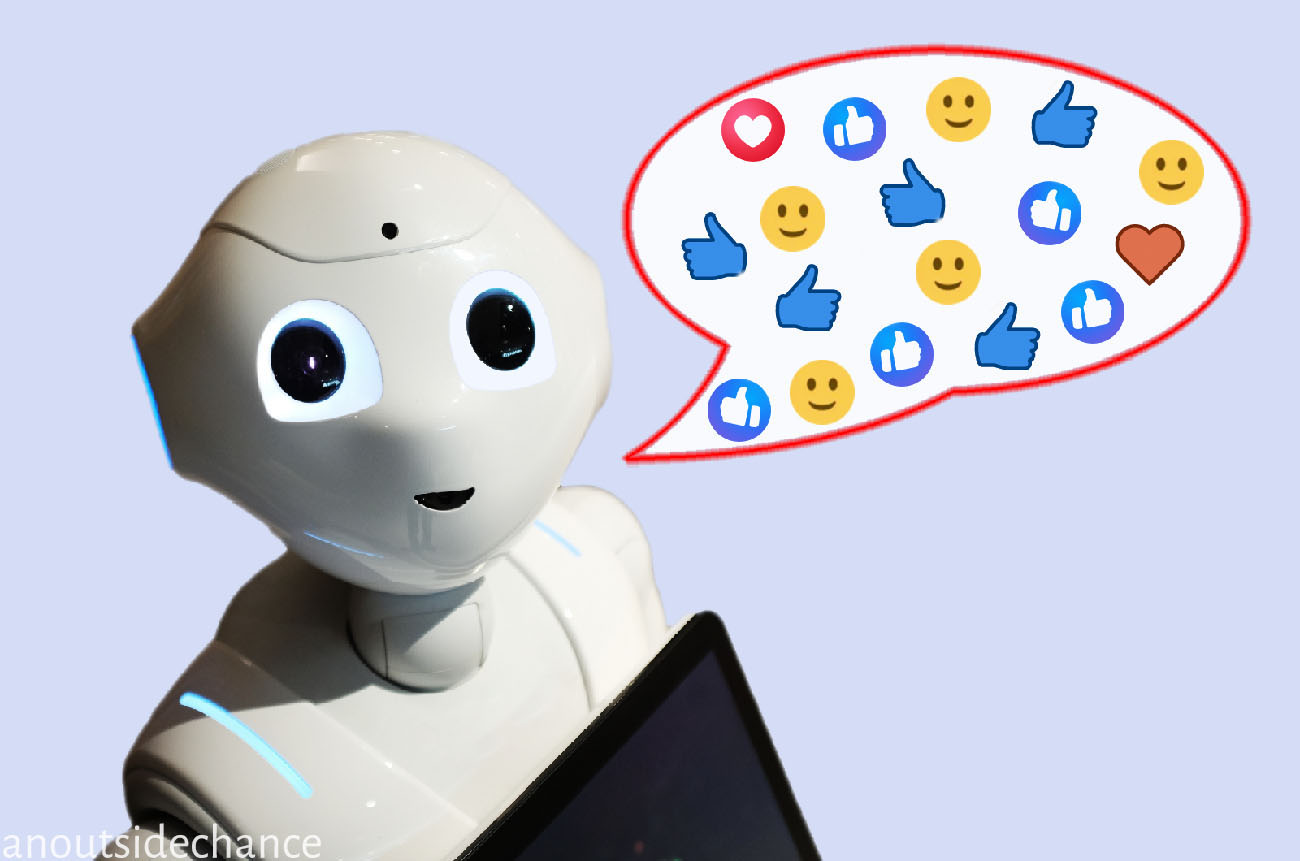Table of Contents
1. Introduction
Artificial Intelligence (AI) has become an integral part of our daily lives, significantly influencing various sectors, including social media. Social media platforms, initially designed for connecting people, sharing ideas, and fostering communication, have evolved into complex ecosystems powered by Artificial Intelligence. This evolution has transformed how users interact with content, engage with brands, and communicate with one another. This article delves into how Artificial Intelligence has shaped social media platforms and explores its future implications.

2. The Early Days of Social Media
The inception of social media can be traced back to the late 1990s and early 2000s with platforms like Six Degrees, Friendster, and MySpace. These platforms were relatively simple, allowing users to create profiles, add friends, and share basic content. However, they lacked the sophisticated algorithms and personalized experiences that modern users expect. The primary goal was to create networks of friends and acquaintances, with limited focus on data analysis or targeted content delivery.
3. Artificial intelligence Integration into Social Media
Data Analysis and User Insights
One of the most profound impacts of Artificial Intelligence on social media is its ability to analyze vast amounts of data. AI algorithms sift through user interactions, preferences, and behaviors to generate detailed insights. These insights help platforms understand user needs and preferences, enabling them to tailor the user experience more effectively.
For instance, Facebook’s AI algorithms analyze likes, comments, shares, and other interactions to build detailed user profiles. These profiles are then used to deliver personalized content, advertisements, and friend suggestions, enhancing user engagement and satisfaction.
Personalized Content Curation
Personalized content curation is another significant contribution of AI to social media. Instagram, Twitter, and TikTok algorithms, among others, examine user behavior to display content that corresponds with specific interests. This process involves:
- Content Recommendation Engines: These engines analyze past behavior to suggest relevant posts, videos, and articles. For example, YouTube’s recommendation system uses AI to keep users engaged by suggesting videos based on their viewing history.
- Feed Algorithms: Platforms like Facebook and Instagram use Artificial Intelligence to arrange posts in users’ feeds based on predicted interest, rather than chronological order. This ensures that users see the most relevant content first.
Enhanced User Engagement
Artificial Intelligence enhances user engagement by making social media more interactive and responsive. Chatbots, powered by natural language processing (NLP), provide instant customer service, answer queries, and facilitate transactions. AI-driven features like Instagram filters and Snapchat lenses also boost engagement by allowing users to create unique and entertaining content.
4. AI-Driven Content Moderation
Detecting and Managing Inappropriate Content
As social media platforms grow, so does the volume of content, including potentially harmful material. AI plays a crucial role in content moderation by identifying and managing inappropriate content. Machine learning algorithms scan posts, comments, and images to detect hate speech, violence, and explicit material. For example, Facebook’s AI systems are trained to recognize and remove content that violates community standards.
Combating Fake News and Misinformation
Misinformation and fake news have become significant challenges for social media platforms. Artificial Intelligence helps combat these issues by:
- Fact-Checking Algorithms: These algorithms cross-reference information with credible sources to identify false claims. For instance, Twitter uses AI to flag and label tweets containing misleading information.
- Pattern Recognition: AI systems analyze patterns and sources of misinformation, enabling platforms to take proactive measures against potential threats.
5. Artificial Intelligence in Advertising on Social Media

Targeted Advertising
AI has revolutionized social media advertising by enabling highly targeted campaigns. Platforms collect extensive user data, including demographics, interests, and online behavior, to create detailed user profiles. AI algorithms then match these profiles with relevant advertisements, ensuring that users see ads that are most likely to resonate with them.
Predictive Analytics
Predictive analytics, powered by AI, allows advertisers to forecast trends and user behavior. By analyzing past data, AI can predict which ads are likely to succeed, optimizing ad spend and maximizing ROI. This capability is particularly valuable during events like Black Friday or major product launches, where understanding user intent can significantly impact sales.
6. The Role of AI in Social Media Management

Automated Scheduling and Posting
Social media management tools like Hootsuite and Buffer use AI to automate scheduling and posting. These tools analyze audience engagement patterns to determine the optimal times for posting, ensuring that content reaches the widest possible audience.
Performance Analytics
AI-driven analytics tools provide detailed insights into social media performance. These tools track metrics such as engagement rates, reach, and conversion rates, helping marketers refine their strategies. For instance, Sprout Social uses AI to analyze social media interactions and provide actionable recommendations for improving performance.
7. Ethical Considerations of AI in Social Media
Privacy Concerns
The extensive data collection and analysis capabilities of AI raise significant privacy concerns. Users often share personal information on social media, which AI systems can analyze to create detailed profiles. This data can be misused or mishandled, leading to breaches of privacy. Platforms must ensure robust data protection measures and transparent policies to address these concerns.
Algorithmic Bias
AI algorithms can perpetuate existing biases present in training data. For example, facial recognition systems have been criticized for inaccuracies and biases against certain demographic groups. Social media platforms must strive to eliminate bias from their algorithms to ensure fair and equitable treatment of all users.
8. The Future of AI and Social Media
The future of AI in social media promises even more sophisticated and personalized experiences. Emerging trends include:
- Augmented Reality (AR) and Virtual Reality (VR): AI-powered AR and VR experiences will create immersive social media interactions. For example, Facebook’s Horizon Workrooms aims to revolutionize remote collaboration using VR.
- Advanced Sentiment Analysis: AI will enhance sentiment analysis, enabling platforms to understand and respond to user emotions more effectively. This capability can improve customer service and content personalization.
- Voice and Gesture Recognition: AI will facilitate more natural interactions with social media platforms through voice and gesture recognition, making the user experience more intuitive and accessible.
9. Conclusion
Artificial Intelligence has profoundly transformed social media platforms, enhancing user experiences through personalized content, efficient moderation, and targeted advertising. While the integration of AI presents numerous opportunities, it also raises ethical considerations that must be addressed. As AI continues to evolve, its role in social media will likely expand, offering even more innovative and immersive experiences. Platforms and users alike must navigate this evolving landscape with awareness and responsibility to harness the full potential of AI in social media.
Frequently Asked Questions (FAQs)
1. How does AI enhance the user experience on social media platforms?
AI enhances the user experience on social media by providing personalized content, improving user engagement, and ensuring a safer environment. Algorithms analyze user data to curate content that matches individual interests, making feeds more relevant and enjoyable. AI-driven features such as chatbots and interactive filters further boost engagement, while AI-based content moderation systems detect and remove inappropriate content, creating a more secure platform for users.
2. What are some examples of AI-driven content moderation on social media?
AI-driven content moderation involves using machine learning algorithms to detect and manage inappropriate content. Examples include Facebook’s AI systems that identify and remove hate speech, violence, and explicit material. Similarly, Twitter employs AI to flag and label tweets containing misleading information. These systems use pattern recognition and fact-checking algorithms to maintain community standards and combat misinformation.
3. How does AI help in social media advertising?
AI revolutionizes social media advertising through targeted advertising and predictive analytics. By analyzing extensive user data, AI creates detailed profiles that help match advertisements with the most relevant audience. Predictive analytics further enhance advertising by forecasting trends and user behavior, allowing advertisers to optimize their campaigns and maximize return on investment.
4. What are the ethical concerns associated with AI in social media?
Ethical concerns related to AI in social media include privacy issues and algorithmic bias. AI systems collect and analyze vast amounts of personal data, raising concerns about data misuse and breaches of privacy. Additionally, AI algorithms can perpetuate existing biases present in training data, leading to unfair treatment of certain demographic groups. Social media platforms must implement robust data protection measures and work to eliminate bias from their algorithms.
5. What future trends can we expect with AI in social media?
The future of AI in social media will likely include more advanced and personalized experiences. Emerging trends include the use of augmented reality (AR) and virtual reality (VR) to create immersive interactions, enhanced sentiment analysis for better understanding and responding to user emotions, and the integration of voice and gesture recognition for more natural and intuitive user interfaces. These innovations promise to further transform how users interact with social media platforms.









